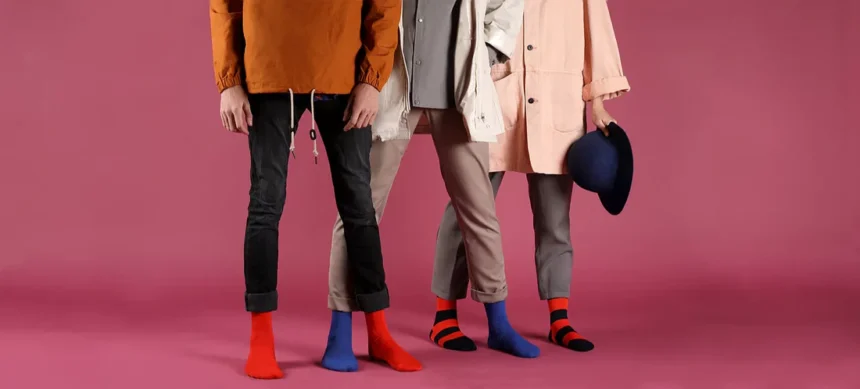Key Takeaways
- Thoughtful sock design plays a crucial role in comfort and sensory experiences for kids.
- Innovative materials and seamless construction have become essential in modern sock manufacturing.
- Sensitivity issues in children require special attention to enhance comfort through specific design elements.
Understanding Sensitivity in Children
Sensitivity in children, particularly to the textures and feels of clothing, can significantly impact their overall sense of well-being. For a child dealing with tactile sensitivity, choosing clothing becomes not just a matter of style or warmth but a crucial element in making their day more comfortable. Sensory sensitivities can lead to heightened responses to seemingly trivial discomforts, where something as simple as a sock seam can become a major irritant. This sensitivity makes the selection of items like socks critically important. Consider the advantages of seamless socks for kids, which are designed to eliminate any friction or irritation caused by traditional seams.
Understanding conditions like Sensory Processing Disorder cannot be overstated in this context. Parents often describe sensory processing challenges as an invisible burden that affects how their children interact with their surroundings. Focusing on comfortable garments becomes a strategy to help these children better engage in daily activities, reducing unnecessary stress and improving their overall quality of life.
The Importance of Seamless Design
People without sensitivity issues may not notice seams in clothing, but for a child with Sensory Processing Disorder, these seams can feel like rough, abrasive edges against the skin. Traditional sock seams are notorious for causing irritation due to pressure points that can lead to skin abrasions and blisters, especially for children constantly moving. Seamless socks address this by providing a smooth, continuous surface that eliminates discomfort zones.
The benefits of seamless design extend beyond just eliminating irritation. Kids can focus better in school and while playing when they are free from distracting discomforts. Real-world applications of seamless clothing, such as those seen in sportswear and active gear, support this by providing comfort without sacrificing functionality, allowing children to perform at their best in various settings.
Innovative Materials in Sock Manufacturing
Choosing materials in sock manufacturing is pivotal for ensuring a comfortable experience for sensitive feet. Children with sensitive skin can benefit significantly from natural fabrics like cotton and bamboo because of their hypoallergenic qualities and breathability. Bamboo fiber, in particular, is gaining popularity due to its softness and moisture-wicking capabilities, ensuring feet stay dry and comfortable throughout the day.
Meanwhile, advancements in textile manufacturing have led to innovative blends that combine natural fibers’ softness with synthetics’ durability. These materials are designed to enhance not only the comfort but also the lifespan of the socks. As highlighted in recent studies, the continuous improvement in fabric technologies points towards an exciting future where functionality and comfort coexist without compromise.
The Role of Cushioning and Support
Cushioning and support are vital components in ergonomic sock design, especially for active children. Extra cushioning is a barrier against the impact of physical activities, absorbing shocks and reducing the strain that can lead to foot fatigue. This is particularly beneficial for children engaged in sports or outdoor play, as it helps protect their developing feet from excessive pressure and potential injuries.
Guaranteeing correct alignment and lowering strain on the feet and legs, including arch support into sock design, can help further preserve foot health. This additional support can significantly enhance endurance and comfort, allowing children to enjoy their activities without discomfort or fatigue.
Color and Design Considerations
Beyond comfort, the color and design of socks can also psychologically impact children. Bright colors and engaging patterns are known to stimulate positive emotions and creativity. For children, wearing comfortable and visually appealing socks can boost their mood and confidence.
However, it’s crucial to balance aesthetic appeal and functional design. While vibrant socks may capture attention, they must also meet the essential criteria of comfort and sensitive support to benefit children’s needs truly.
Tips for Choosing the Right Socks for Sensitive Skin
- Opt for seamless designs that minimize irritation and offer a smoother fit.
- Select socks made from natural, breathable materials like cotton or bamboo to prevent allergies.
- Search for socks with built-in cushioning and arch support for enhanced comfort during activities.
- Remember that trial and error can be the best approach—test various brands and models to find the perfect fit for your child’s needs.
Conclusion: Looking Ahead
The world of sock design continues to evolve, promising even more significant innovations for addressing the unique needs of children with sensitivity issues. As research into fabric technology and ergonomic design progresses, parents can expect more tailored options that prioritize their children’s well-being and comfort. Staying engaged with these advancements ensures that caregivers can provide the best possible solutions, supporting an environment where children can thrive comfortably and confidently.






